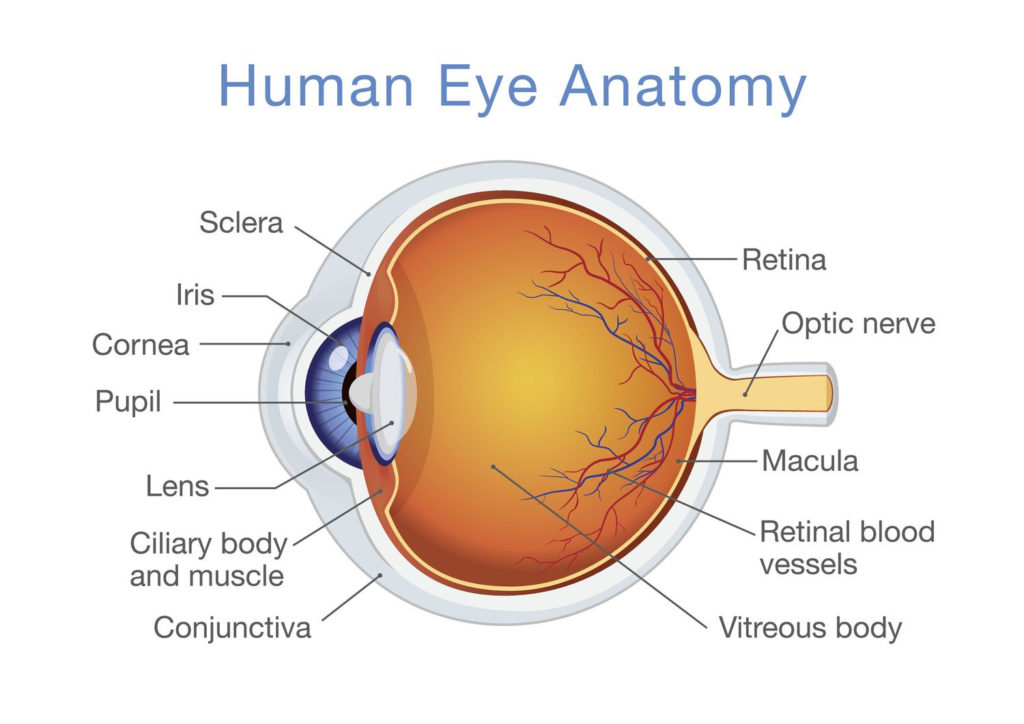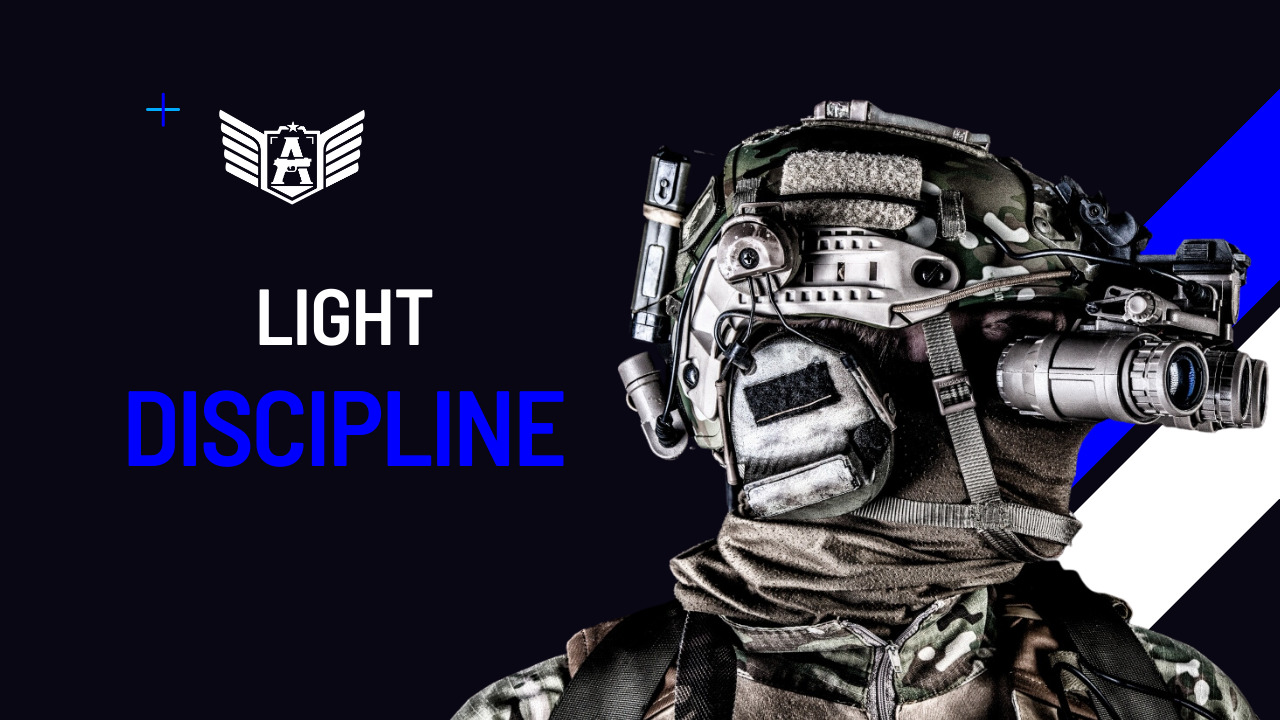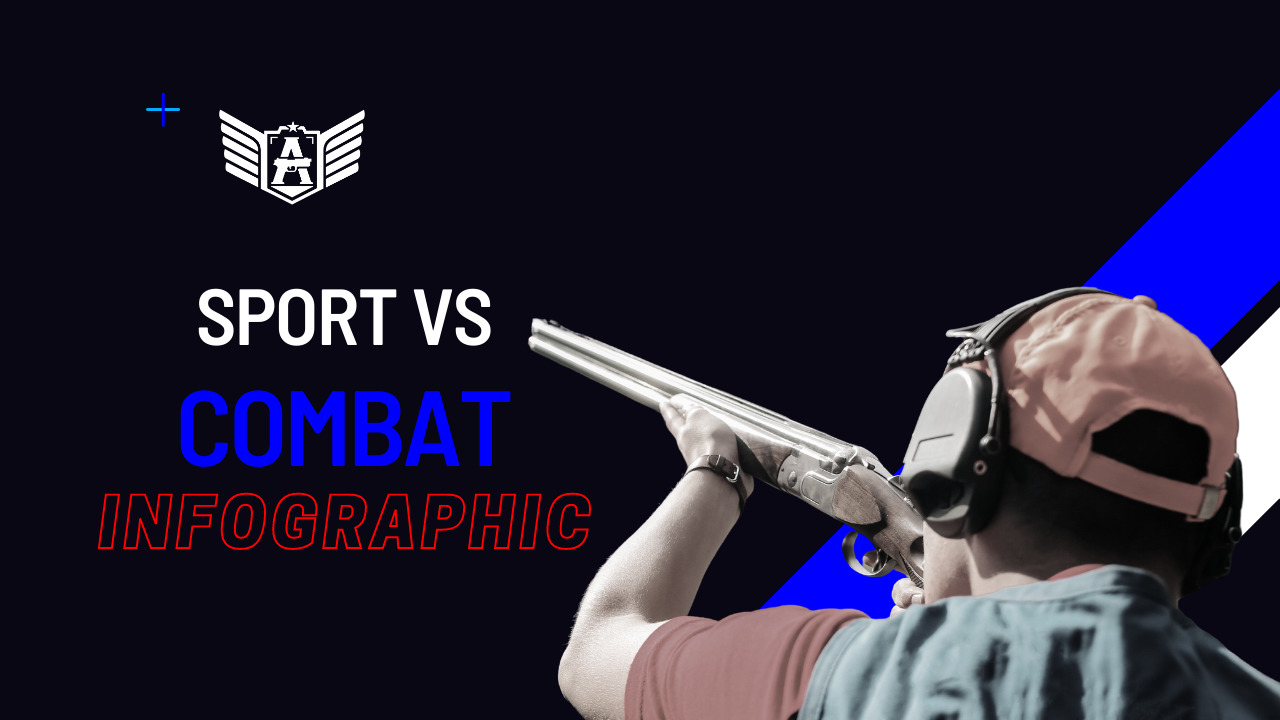Light discipline means using available lighting resources – own artificial, third-party artificial, and natural – optimally to gain tactical advantage in combat.

It is reasonable to assume that if you are going to use your firearm in combat, it may happen in conditions of poor lighting, which can result from the late hours of the day or the penumbra effect caused by the difference in lighting between external and internal environments.
Intelligence in practices related to efficient use of light can give an advantage to those stalking or advancing in new territory.
VISION
To understand how to behave in different luminosities, it is necessary to have a basic understanding of how the human eye works.
Without the intention of turning this text into an ophthalmology class, there are certain eye structures that are especially relevant when it comes to shooting and combat.
We have the cornea, which, together with the lens, functions as a lens, the iris, which adjusts the aperture of the pupil, allowing more or less light to enter, and the retina, which transforms light waves into visual information.
The retina, the most important part of the eye for the purposes of this text, has two types of photosensitive cells: cones and rods.
There are about 6 million cones and 120 million rods at the back of your eye. Cones are responsible for daytime vision (photopic) and differentiation between colors, such as blue, green, and red (RGB). Rods, on the other hand, are responsible for night vision (scotopic).

Rods do not distinguish colors – you cannot see colors in the dark. They have a substance called rhodopsin that breaks down when exposed to light and takes 15 to 20 minutes to regenerate. Therefore, the transition from photopic to scotopic vision can be challenging for operators (mesopic vision).
In low light conditions, the iris allows the pupil to open, which leads to a higher incidence of light – proportionally – on the retina, resulting in a decrease in depth of field. Like a professional camera lens with an f/2.5 aperture, the object of the photograph (or vision) becomes focused, but the periphery becomes indistinguishable.
How do you think this affects your combat capability?

OWN ARTIFICIAL ILLUMINATION

To start, it is essential for the operator to have at least one flashlight – preferably more – available at all times. Flashlights at home or in the backpack inside the car are just dead weight.
Flashlights should be compact enough to be carried daily, sturdy enough to withstand impacts, discreet enough not to reflect light – even if scarce – from the environment, and powerful enough to prevent visual access to what is behind the light beam.
An obvious alternative is dedicated weapon-mounted lights, which are linked to the carry of a long or short firearm. However, flashlights attached to weapons must have a quick disconnect system; otherwise, the operator might inadvertently sweep – with the muzzle – their own colleagues or team members to illuminate something.
CLOTHING AND ACCESSORIES
Clothing should prioritize discretion. If you didn’t skip your fourth-grade classes, you may recall that lighter colors reflect more light, while darker colors absorb more.
When white light shines on a green object, the object absorbs all colors except green, which is reflected, reaching your cones in the retina, processing the information that the object is green.
When white light shines on a white object, all colors are reflected, reaching your retina simultaneously, processing the summation of these colors as a white object.
When white light shines on a black object, no color is reflected.
It is easy to infer, therefore, that sober colors (black and shades of gray) should take priority over bright colors (white, yellow, etc.).
Attention should also be given to often overlooked sources of one’s own light – even cell phones, even inside pockets, emit enough light to give away your position in the dark. Watches have light buttons that can be unintentionally activated, and their glass can also reflect unwanted light waves.
Half light
Common sense assumes that the discipline of light or combat in low light conditions only happens at night. However, even during high noon, hard shadows are formed where a cautious operator would want to be to minimize the disclosure of their position.
The constricted pupils of the observer in direct sunlight, along with the broken rhodopsin, do not allow the rods to receive information about a threat in the shadows, for instance.
Similarly, closed environments from buildings to woods can provide little light even during the day. The transition from well-lit to low-lit environments is the golden point of low-light combat.
SHADOWS
Even at night, bodies cast shadows, often harder (well-defined) or longer than in illuminated environments.
Imagine the shadows of feet passing through the gap of a door, or the clear silhouette of a careless shooter hiding behind cover.
Moreover, shadows are allies for those who intend to go unnoticed. Stay in the darkest location.
NATURAL ILLUMINATION
On nights with a full moon, visibility is very good in open environments. Except for nights with a waning moon or completely cloudy skies, there is enough light to create silhouettes, shadows, and offer opportunities for the operator to identify threats or discreetly get rid of them.
In addition to primary sources of natural illumination – sun, moon, occasional fire – which can be explored as discussed in the “penumbra” section, there are secondary sources of light: reflections on a white wall from a lake or a sandy beach or desert, for example.
THIRD-PARTY ILLUMINATION
Illumination can be deliberate, occasional, or unintentional. This light can come from an enemy’s flashlight searching for you in the dark, from an unaware car turning a corner, or, by accident, from a flashlight in someone’s pocket that turned on when they bent their hip or even from the tip of a lit cigarette or the white palm of a hand reflecting the moon – this often happens with bolt action rifle shooters.
Generally, third-party illumination provides a series of important information for combat: the probable location of at least one of the enemies, the type of illumination used, and, consequently, the probable technical level of the enemy, the alert level, the number of enemies – if the deliberate lighting is done incorrectly, etc.
TECHNOLOGIES
In 2020, flashlights are increasingly becoming a thing of the past. Toy cameras can reproduce images with the quality of environments with very little light.
Night vision equipment, both active and passive, is available from cell phones, vehicles, children’s toys to high-end NVGs costing tens of thousands of dollars.
It is worth considering using such equipment if the chance of fighting in poor lighting conditions is reasonable.
TRAINING

Training in low-light conditions is essential to familiarize yourself with different luminosities and the efficient use of lighting resources. Operators should learn to use flashlights effectively, choose clothing and accessories that prioritize discretion, and understand the importance of shadows and natural illumination. Moreover, it is crucial to be aware of the potential light sources provided by third parties, as they can reveal valuable information during combat.
By staying informed and trained in various lighting scenarios, operators can maximize their advantage in combat and ensure their safety in challenging situations. Technology, such as night vision equipment, can also be beneficial in low-light combat, enhancing the operator’s capabilities and improving situational awareness.
If you want to know more, subscribe to our Low Light Combat Course.





Comment on “Introduction to Light Discipline”